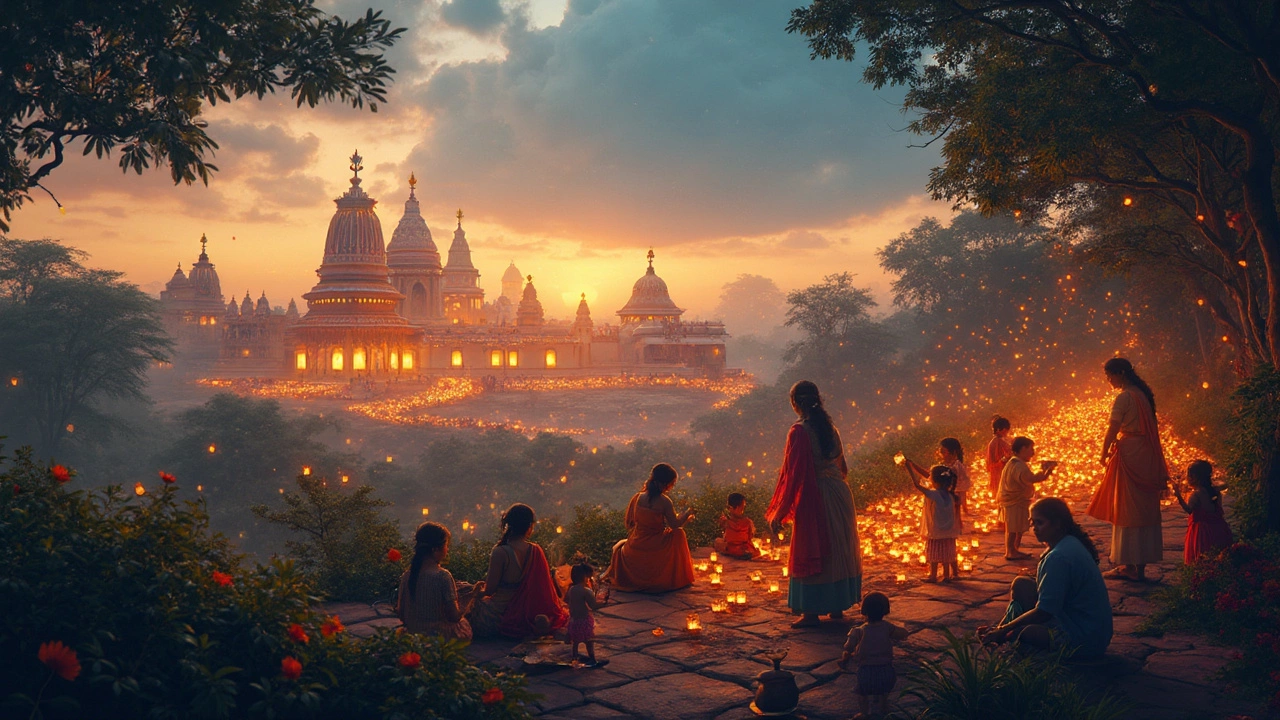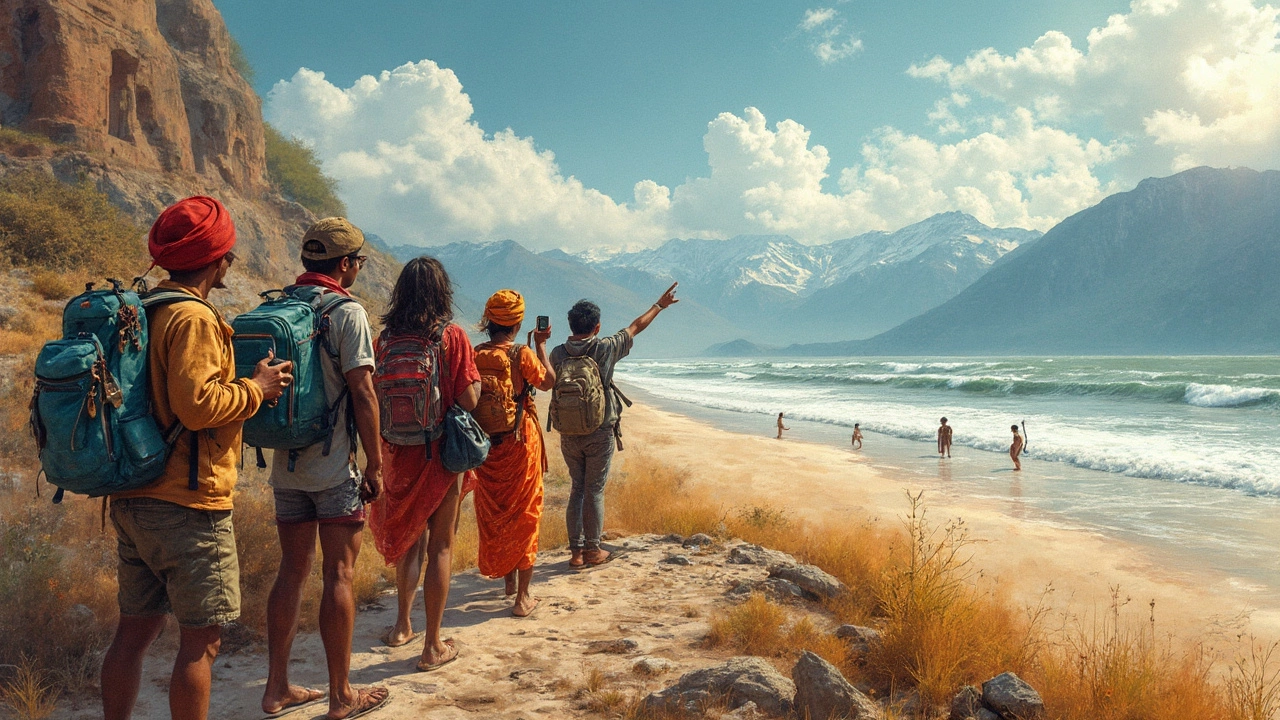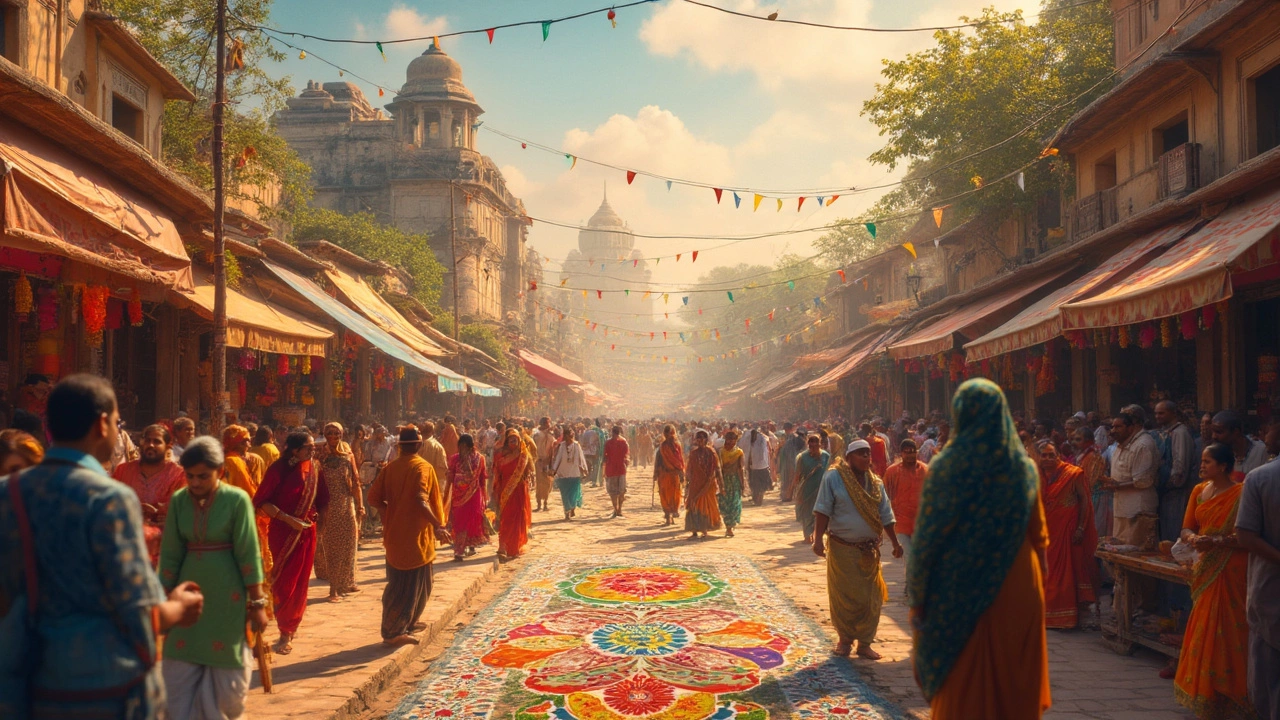Ask anyone in India which state has the best culture and get ready for a heated debate. You’ll hear a South Indian say it’s all about Tamil Nadu with its temples, while a Punjabi will argue nothing beats their music and food. It gets even messier when you throw in states like Rajasthan—think palaces and colorful turbans—or West Bengal with its poetry and Durga Puja fever.
If you want to weigh in, you need more than opinions. Check out the states' UNESCO World Heritage sites. Maharashtra isn’t just about Mumbai; it’s got the Ajanta and Ellora Caves which draw history buffs from across the world. Tamil Nadu stuns with the Brihadeeswara Temple. Rajasthan boasts forts that look like they fell out of a blockbuster movie. These places tell the story of each state better than any travel brochure.
- The Battle of Heritage Sites
- Food, Festivals, and Daily Life
- Languages and Traditions
- Monuments That Define a State
- Tips for Exploring Indian Culture
The Battle of Heritage Sites
When you stack Indian states against each other, heritage sites often become the ace up their sleeves. Everyone loves to talk about their local food or music, but grand old buildings and ancient ruins? Those are the bragging rights. UNESCO has actually listed 42 World Heritage sites across India as of 2024, and the most action happens in just a handful of states.
If you look for numbers, Maharashtra stands tall with five UNESCO sites, like the Ajanta and Ellora Caves, Elephanta Caves, and the Victorian Gothic buildings in Mumbai. Tamil Nadu gives it tough competition—the Brihadeeswara Temple in Thanjavur isn’t just stunning, it’s over a thousand years old and still in regular use. Rajasthan shows off with the Hill Forts (six in total), while Uttar Pradesh throws the Taj Mahal into the mix—good luck topping that.
Let’s break down how these states stack up, site-by-site. Here’s a quick cheat sheet:
| State | UNESCO Heritage Sites | Top Mentioned Sites |
|---|---|---|
| Maharashtra | 5 | Ajanta Caves, Ellora Caves, Elephanta Caves, Victorian Mumbai |
| Tamil Nadu | 4 | Brihadeeswara Temple, Group of Monuments at Mahabalipuram |
| Rajasthan | 3 | Hill Forts, Jantar Mantar, Keoladeo National Park |
| Karnataka | 2 | Hampi, Pattadakal |
| Uttar Pradesh | 2 | Taj Mahal, Agra Fort |
But it’s not just about counting sites—each place represents a distinct piece of Indian culture. The Ajanta and Ellora caves are all about ancient Buddhist, Hindu, and Jain art. Hampi in Karnataka throws you back into the days when massive empires ruled South India. The forts in Rajasthan don’t just look good in photos; they’ve seen centuries of battles and kings. Even Kerala, which doesn’t have as many UNESCO sites, draws crowds for the Western Ghats and silent backwaters.
Pro tip: Pick a site based on what you enjoy. Into temples? Head to Tamil Nadu. Obsessed with Mughal history? Uttar Pradesh is your spot. Like epic landscapes? Hampi or Kerala won’t disappoint.
Food, Festivals, and Daily Life
Talking about culture in India without bringing up food and festivals is like trying to eat biryani without the spices. Every state serves up its own flavor, literally. Take West Bengal—ask locals about their favorite dish and you’ll hear about kosha mangsho and mishti doi. Or go south to Kerala and you’ll find people swearing by appam and stew, especially during their colorful Onam festival. Punjab, on the other hand, loads up plates with butter chicken and fresh naans, then cranks up the music for Baisakhi and Lohri dance-offs.
The way people eat and celebrate also tells you heaps about day-to-day living. South Indians are crazy about breakfast—idlis, dosas, and filter coffee fuel their mornings. In Gujarat, the thali isn’t just a meal but a daily tradition where families gather and chat over endless sabzis and sweets. Street food isn’t just big in Mumbai; it’s a major part of daily life everywhere in India. Try pani puri in Delhi or vada pav in Maharashtra and you’ll never forget it.
Festivals here aren’t just holidays; they’re serious business. States turn into a riot of color during Diwali, Holi, Pongal, Eid, and Christmas. In Goa, church bells ring out for Christmas and the whole state parties during Carnival. Meghalaya lights up with the Wangala drum festival, and the Pushkar Camel Fair in Rajasthan attracts crowds like a rock concert.
To get a quick peek at how some states stack up with popular foods and major festivals, check this out:
| State | Must-Try Food | Main Festival |
|---|---|---|
| Tamil Nadu | Dosa, Chettinad Chicken | Pongal |
| Punjab | Butter Chicken, Chole Bhature | Baisakhi |
| West Bengal | Fish Curry, Mishti Doi | Durga Puja |
| Maharashtra | Vada Pav, Pav Bhaji | Ganesh Chaturthi |
| Kerala | Appam, Kerala Sadya | Onam |
If you’re chasing Indian culture, dig into the food stalls, join in the dance circles, or just watch how a regular family celebrates a festival. Get ready to loosen your belt—and maybe your schedule—because food and festivity here don’t stick to a timer.

Languages and Traditions
India’s mix of languages is wild—22 official languages and over 1,600 distinct ones used every day. Take Tamil Nadu: people here proudly speak Tamil, one of the world’s longest-surviving classical languages. Skip east to West Bengal and you’ll find everyone chatting away in Bengali, a language known for its poetry and books. Travel north and it all changes again—Punjabi and Hindi fill the air, while Rajasthan has its own Marwari dialects.
Language isn’t just about words. It’s tied to food, festivals, and even how folks greet each other. That’s why traditions can feel so different from one state to another. In Kerala, you’ll see Onam, a harvest festival with boat races and flower carpets, while Gujarat lights up with Garba dances during Navratri. These aren’t just fun events—they’re woven into each state’s identity.
“India is not a country, but a continent, and every state is a separate civilization.” — Shashi Tharoor
Here’s a peek at some real stats on the diversity in languages and unique traditions across certain states:
| State | Main Language(s) | Famous Tradition |
|---|---|---|
| Tamil Nadu | Tamil | Bharatanatyam dance, Pongal festival |
| West Bengal | Bengali | Durga Puja, Baul music |
| Kerala | Malayalam | Onam festival, Kathakali dance |
| Punjab | Punjabi | Bhangra dance, Lohri festival |
| Rajasthan | Hindi, Marwari | Ghoomar dance, Teej festival |
If you’re out to really experience Indian culture, don’t just look at monuments. Strike up a chat with locals, pick up a few common phrases—like “Vanakkam” in Tamil Nadu or “Sat Sri Akal” in Punjab—and don’t miss a traditional meal. Each state’s way of talking and celebrating tells you more than any museum ever could.
Monuments That Define a State
You can tell a lot about an Indian state just by looking at its monuments. Each one has a story, sometimes stretching back over a thousand years. These aren’t just photo ops—they’re giant history books made of stone and brick.
Let’s run through some of the most iconic monuments by state:
- Maharashtra: Home to the Ajanta and Ellora Caves. These caves aren’t just old art—they’re masterpieces carved directly into the hills, with paintings that survived over 1,500 years. It’s wild to think about people working with simple tools and no modern tech.
- Tamil Nadu: If you’re into temples, Tamil Nadu rocks the Brihadeeswara Temple in Thanjavur. Built in the 11th century, the temple tower stands at 66 meters—higher than a 20-story building. You’ll see both locals and tourists just staring at the carvings in awe.
- Rajasthan: Rajasthan is all about those jaw-dropping forts, like Amer Fort and Mehrangarh Fort. These aren’t just tourist spots. Amer Fort still hosts huge festivals, while Mehrangarh overlooks Jodhpur like a stone guardian.
- West Bengal: Here you find the Victoria Memorial in Kolkata. It’s newer, from the British era, but it’s a vital part of the local identity. People head there for picnics, protests, and photos—sometimes all at once.
- Uttar Pradesh: Hard to beat the Taj Mahal. It’s one of the New Seven Wonders of the World and pulls over 7 million visitors a year. People propose there, film music videos, and just hang out for selfies. There’s no bigger crowd-puller.
Here’s a quick look at facts that show just how much these monuments pull in attention:
| Monument | Location (State) | Year Built | Approx. Yearly Visitors |
|---|---|---|---|
| Ajanta & Ellora Caves | Maharashtra | 2nd Century BC – 6th Century AD | 1.5 million |
| Brihadeeswara Temple | Tamil Nadu | 1010 AD | 1 million |
| Amer Fort | Rajasthan | 1592 AD | 1.4 million |
| Victoria Memorial | West Bengal | 1921 AD | 2 million |
| Taj Mahal | Uttar Pradesh | 1653 AD | 7-8 million |
So if you really want to judge Indian states by culture, stack up their monuments. These places grab eyeballs, fuel local pride, and shape how the world sees each state. One thing’s for sure—there’s no other country with this kind of variety packed into its heritage sites. Indian culture lives and breathes in these stones.

Tips for Exploring Indian Culture
If you want to really get Indian culture, ditch the tourist-packaged stuff and aim for the local experiences. Here’s how you can dig deeper and actually enjoy your trip more.
- Heritage Sites aren’t just old buildings—they’re alive with stories. Skip the ticket line and find a local guide at places like Hampi in Karnataka or the Sun Temple in Odisha. They can share the myths and weird facts that don’t show up in museum labels.
- Eat where the locals eat. Forget hotel buffets. Try a thali in Gujarat, momos in Sikkim, or street food at Kolkata’s New Market. You’ll taste the real difference between a state’s culture by what’s actually on the plate.
- Travel by train at least once. The Indian Railways are the veins of the country, and the stations are a crash course in language variety, street snacks, and people-watching.
- Don’t plan around just the big sights. Make a list of local festivals to see the best of Indian traditions. Think Holi in Uttar Pradesh, Onam in Kerala, or Navratri in Gujarat for insane colors and energy.
- Respect local customs. In Maharashtra, people touch elders’ feet for blessings. In Rajasthan, folks wear certain turbans to signal where they’re from. Pick up on these little details—they set each state apart.
If you’re focused on Indian culture, talk to people. Ask shopkeepers about stories behind souvenirs. Strike up conversations in tea stalls. The more curious you are, the richer your experience gets, and most locals will be happy to show you what makes their state the best.
